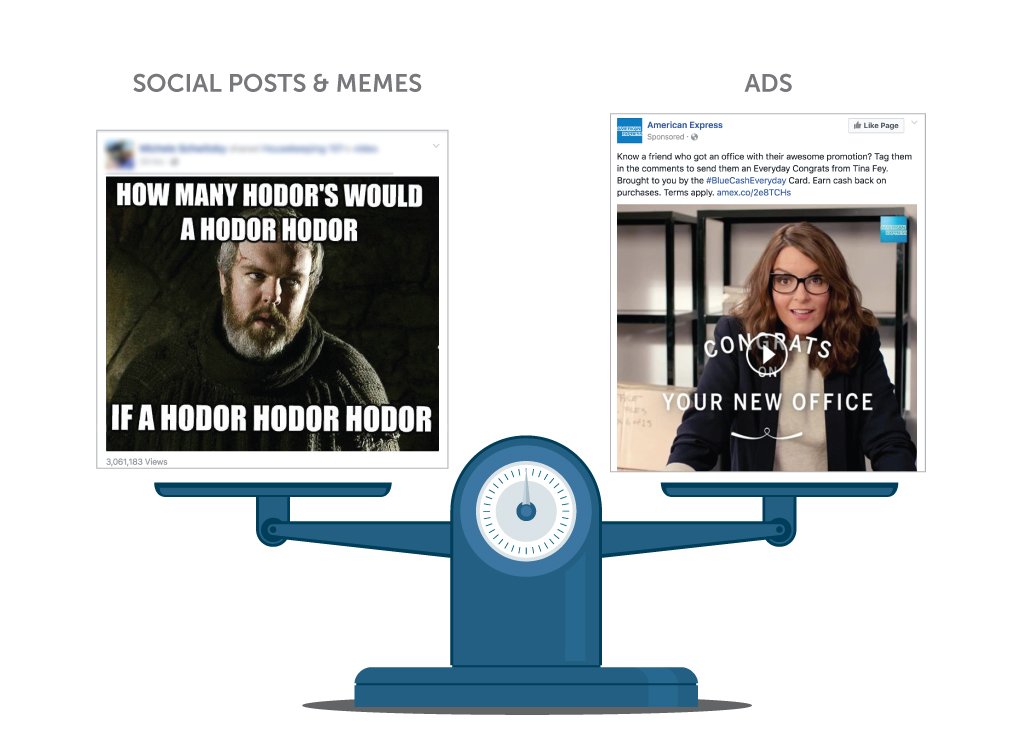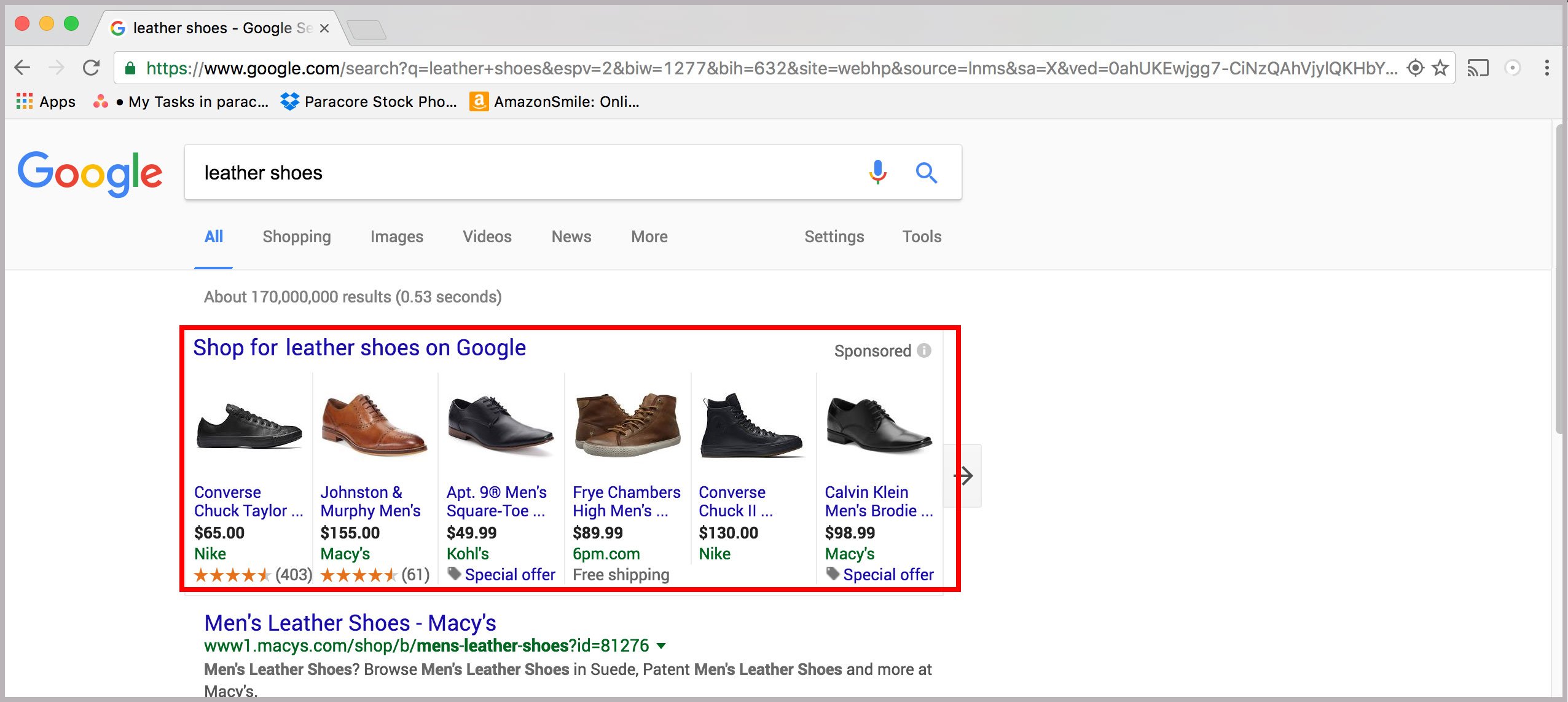
I can feel your eyes rolling, but hear me out.
Advertising has existed since the dawn of business. If you have a product or service, you need to sell it. The last few decades have ushered in new channels like radio, TV, and the Internet, but the fundamentals of marketing haven’t changed.
However, I’ve heard more and more people complaining lately. Consumers are frustrated that there are too many ads, and they aren’t relevant to their needs and interests. Business owners hate paying to distribute their ads on Google or Facebook because they don’t want to spend more money without knowing if it’s actually working — especially on platforms that used to be totally free.
But here’s the thing: Paid media has huge benefits over traditional advertising. Unlike their static cousins in print, radio, and TV, digital ads are driven by demographics AND behavior, and advertisers can track the direct impact to their bottom line. These advancements may cost money, but they’ve totally changed the game by delivering more relevant ads for consumers and more specific targeting and results tracking for businesses.
Yet here we are: still grumbling.
I think the criticism is ridiculous. Stop complaining about the pay-to-play model and be thankful for digital advertising. Here’s why.
Paid media benefits the consumer
Each day, Google processes more than 3.5 billion searches. Facebook currently touts more than 1.5 billion members, and 66% of those members check their account on a daily basis. In fact, both platforms have become so embedded in our lives that we use them as verbs: “I Facebooked her” or “Did you Google it?”
What’s even more amazing? They’re completely free for users.
Supporting so much sharing and searching requires the operating budget of a small country, and since Google and Facebook aren’t charging users, that budget has to come from somewhere. In the grand scheme of things, seeing a few digital ads in our news feeds is a small price to pay.

After all, these ads not only support our lust for meme sharing and reading the latest Game of Thrones spoilers, but they also fund platforms that allow us to find information faster and connect with friends, family, and colleagues from across the world without spending a dime on phone calls or travel.
With Google, information that once was only discoverable through hours at the library can now be found in seconds, empowering anyone to access information and learn at a much quicker rate.
The revenue from Google marketing and Facebook ads also supports major innovations in social networking and productivity, like Gmail, Google Maps, Google Docs, Facebook Live, and Facebook Safety Check — all of which are also available for free!
Plus, if you think advertising is bad now, you must not remember what it was like a few years ago. The engines that power Google marketing and Facebook ads have been getting more sophisticated, which has helped reduce the noise and serve ads more closely tied to each person’s specific interests and behavior. Now, you’re more likely to see an ad for exactly what you need exactly, exactly when you need it, making your online experience more customized, relevant, and enjoyable than ever before.
Paid media benefits small business owners
You might be thinking, “Sure, this is great for the consumer, but I’m the one who has to foot the bill! I’m just the little guy. Why should I have to pay to be seen?”
Traditional advertising requires a big investment with an unclear payoff. A decade ago, a business would have had to purchase expensive print or TV ads to reach potential customers and drive traffic.
SEO and PPC have helped level the playing field and provide more opportunities for small business to get the word out without spending a fortune. Now, for a minimal investment, small business owners can get in front of their exact target audience at exactly the right time and the right place.
Although PPC and SEO are both digital marketing tactics, PPC often gets the most hate from business owners because there are clear hard costs. However, even though SEO may not have a media budget attached to it, it’s far from free. Quality organic content takes time and effort to produce and market, potentially costing even more than a basic PPC campaign.
Ultimately, the best plan is a balance of SEO and PPC. You may begrudge PPC and giving your money to “big business,” but PPC will increase the value of your SEO efforts and continue to drive traffic when you don’t have the time or resources to devote to SEO.
PPC advertising has gotten smarter too, with new features that make it easy for businesses to target people by age and gender, something you’d never be able to do with traditional advertising. This means Google can customize the results based on how old the searcher is and their gender.

For example, let’s say a shopper Googles “leather shoes.” A young woman might see a pair of cute heels in her search results, while an older woman sees a pair of sensible flats, and a man sees a pair of leather dress shoes. Pretty cool, huh?
The consumer has no idea they’re seeing customized search results, and the personalized nature of the ads increases the likelihood they’ll make a purchase. Isn’t a feature like that worth paying a little bit extra each month, especially if it results in more traffic and sales for your business?
I heart paid media, and you should too
Paid advertising not only keeps the platforms we love and use free, but it’s also helping fuel innovation that transforms the way we interact and learn. Plus, Google and Facebook’s advanced audience targeting options allow businesses like yours to get way more bang for your buck than we used to.
Do you agree, or shall we agree to disagree? Leave a comment or get in touch to tell me your thoughts about the pay-to-play model and to see how paid media could work for your business.
Related Posts
- What Is The Difference Between PPC and SEM?
- PC Audit Handbook: How to Analyze Your PPC Campaigns
- The Best PPC Tools of 2022, As Told by PPC Experts
- Beginner’s Guide to UTM Tags & Tracking
- Generate Leads with Facebook Lead Ads
- Cost-per-click vs. cost-per-acquisition: Are you tracking the right PPC metrics?
- How Does Pay Per Click Work?
- Benefits of PPC
- Why Should I Invest in PPC?
- What is Google PPC Advertising?
- Facebook Retargeting Strategy
- Introduction to ManyChat
- Case Study: Return on Ad Spend Optimization
- 🎁🎄 Holiday Ad Spend Strategy
- Should You Be Running Branded Ads?
- SEO vs SEM
- CTAs for YouTube Ads
- Case Study: 258% Increase in Conversions
- Traffic Campaign Strategy
- No Captions on Facebook Ads or YouTube? You’re Killing Performance
- LinkedIn InMail Website Re-targeting




